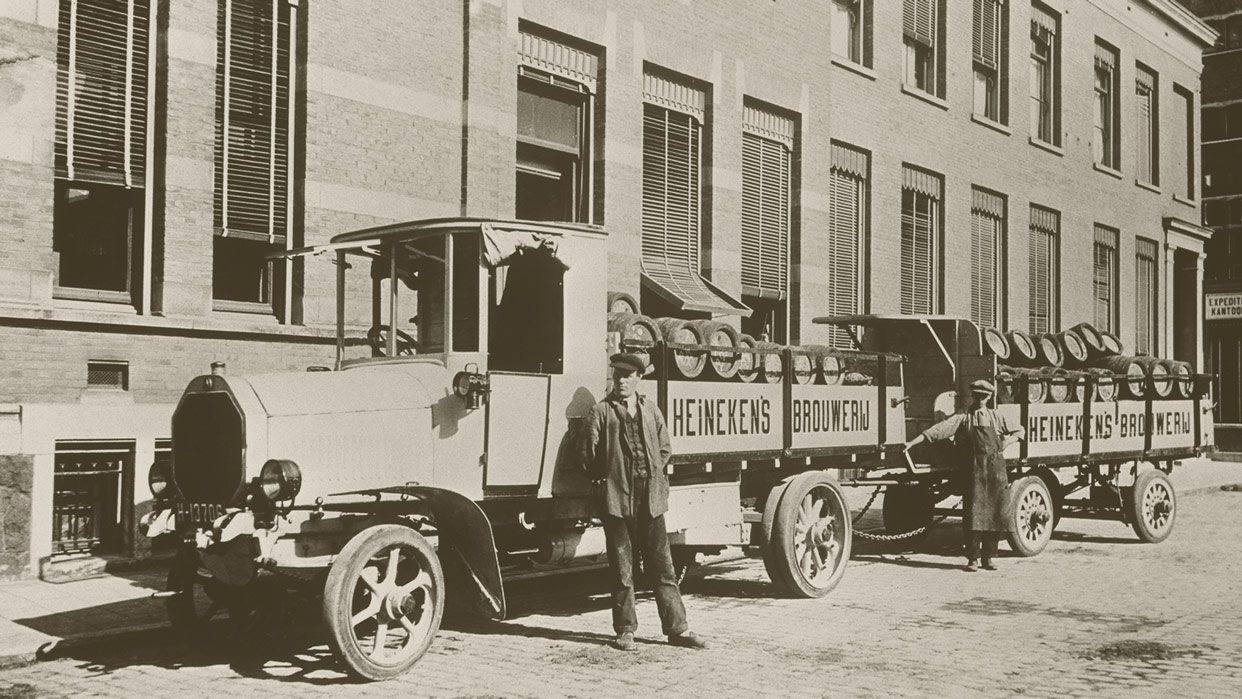
The Heineken Story
Born in Amsterdam, raised by the world.

Born in Amsterdam, raised by the world.
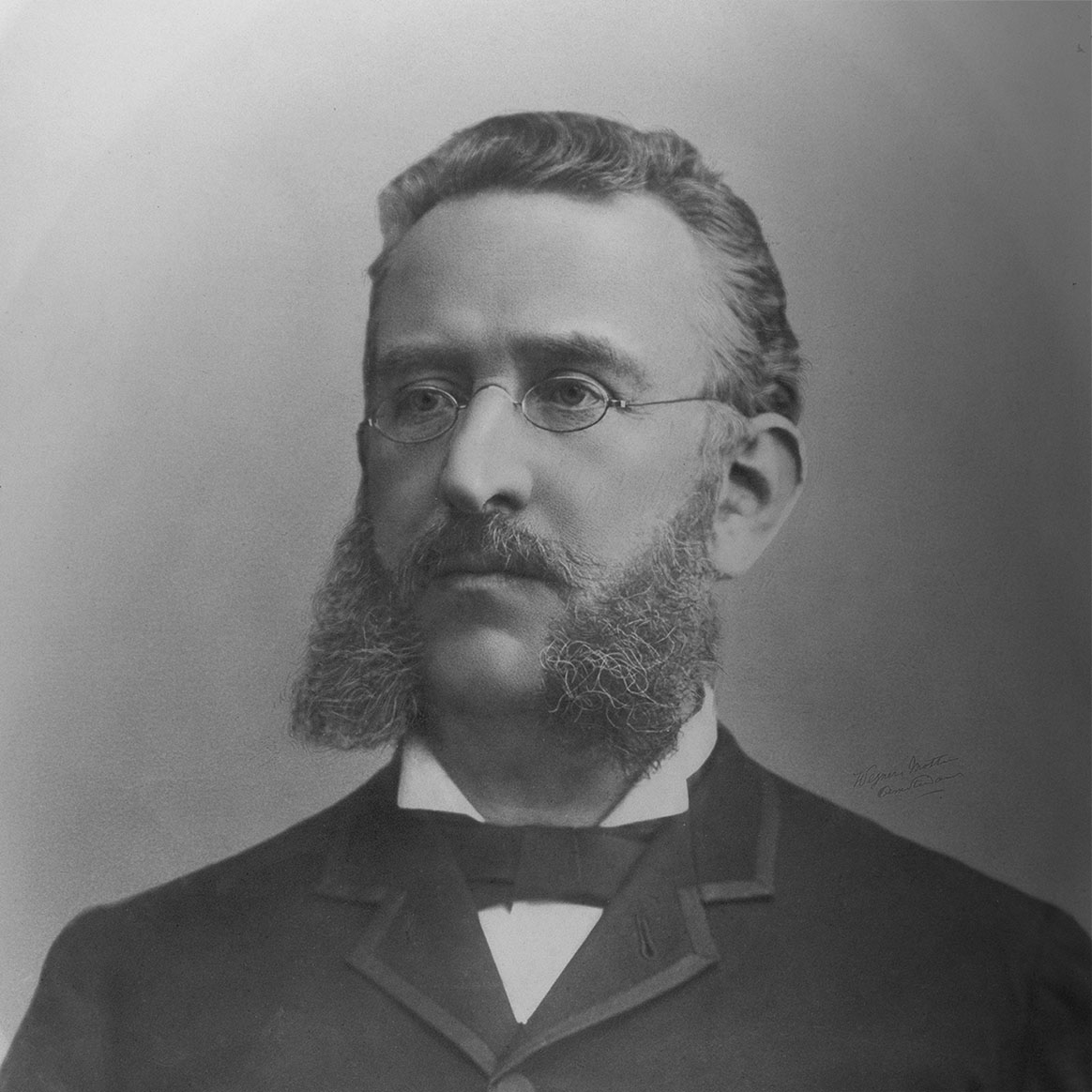
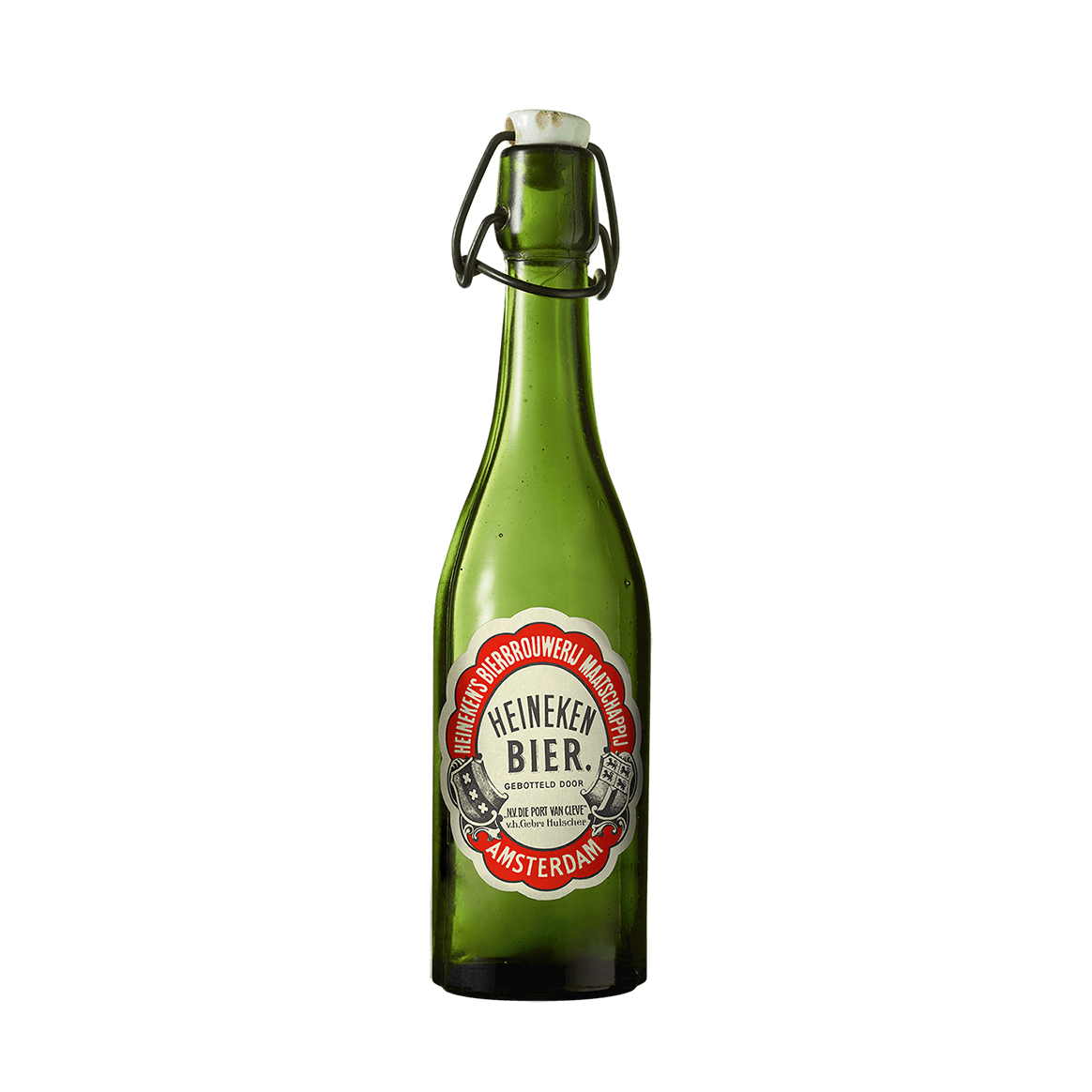
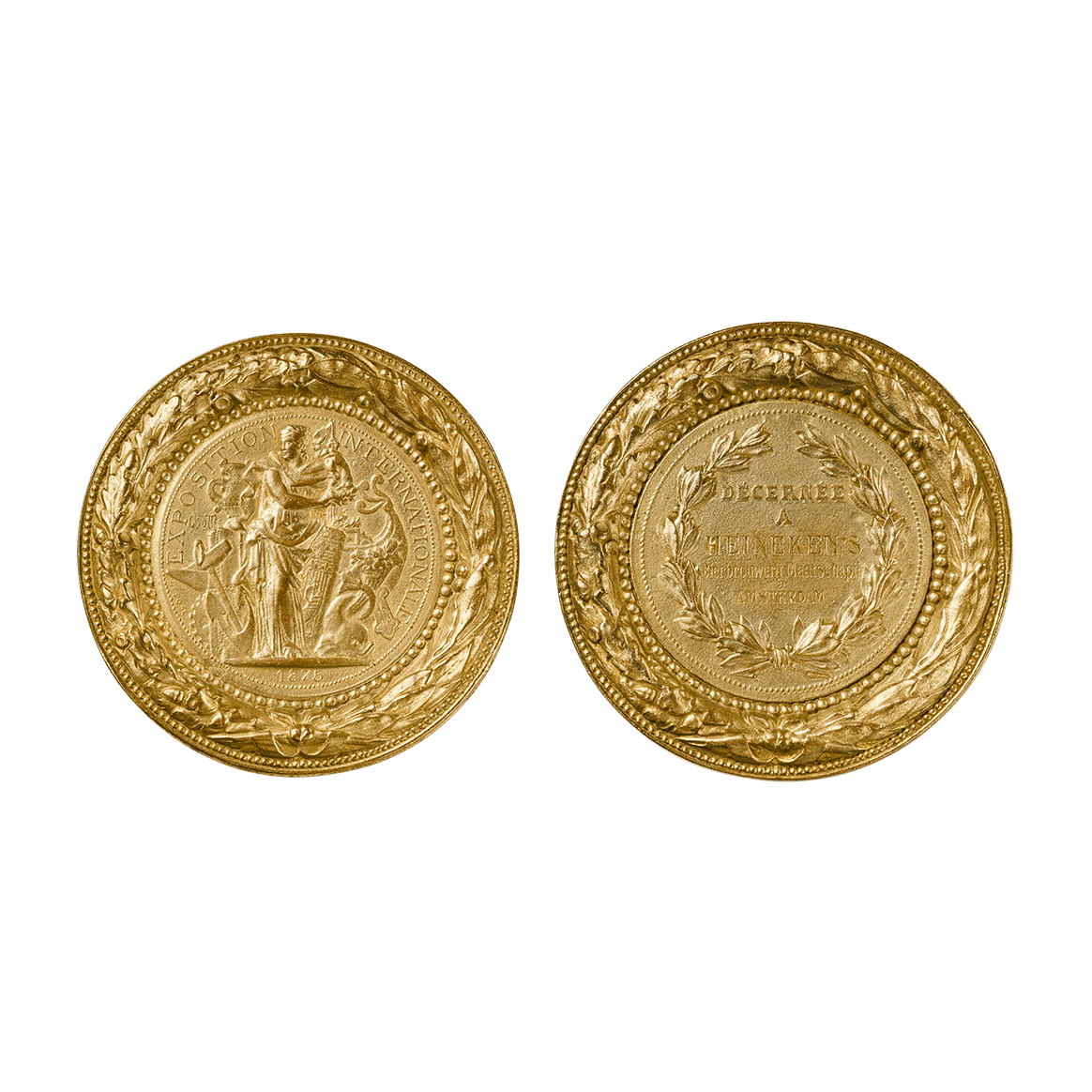
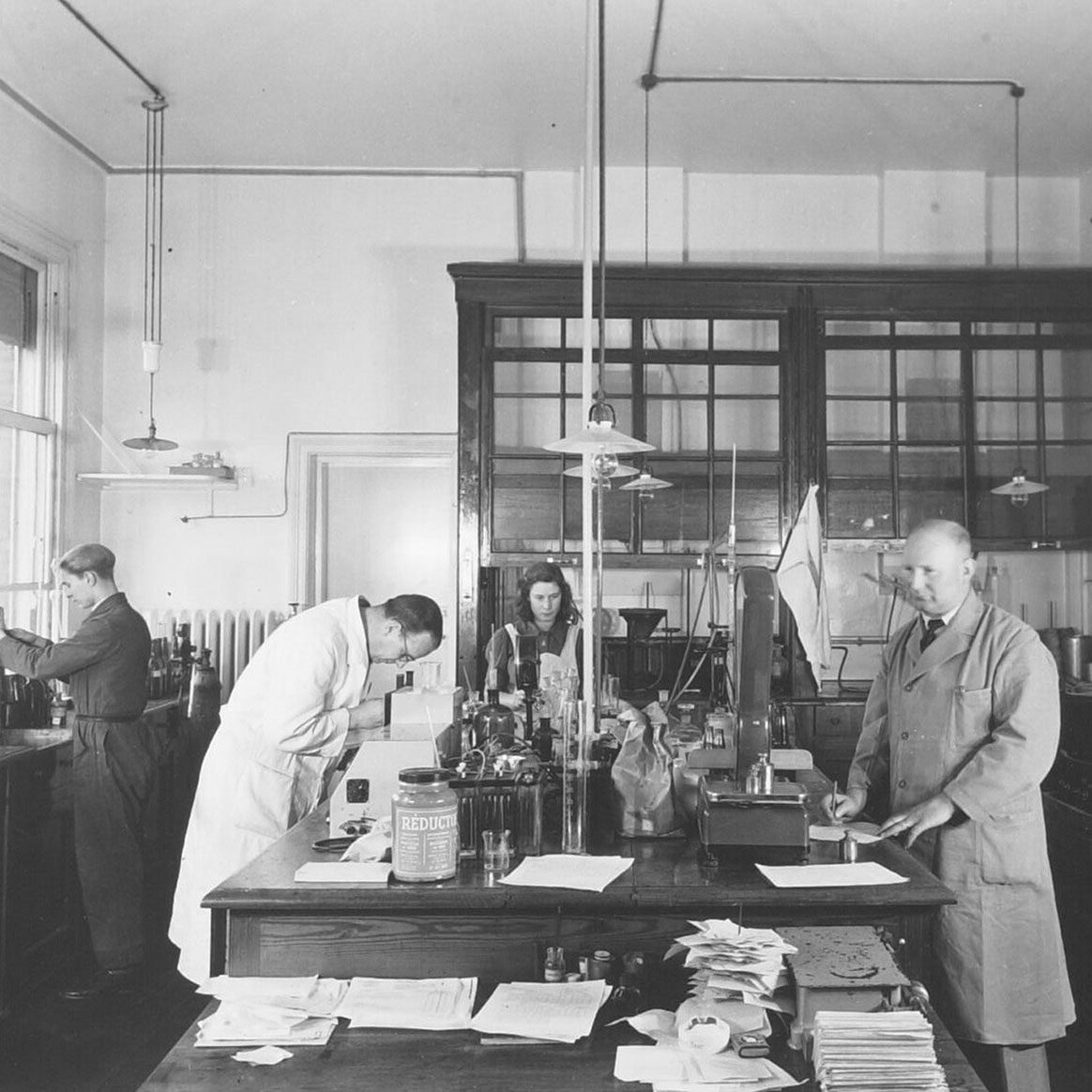
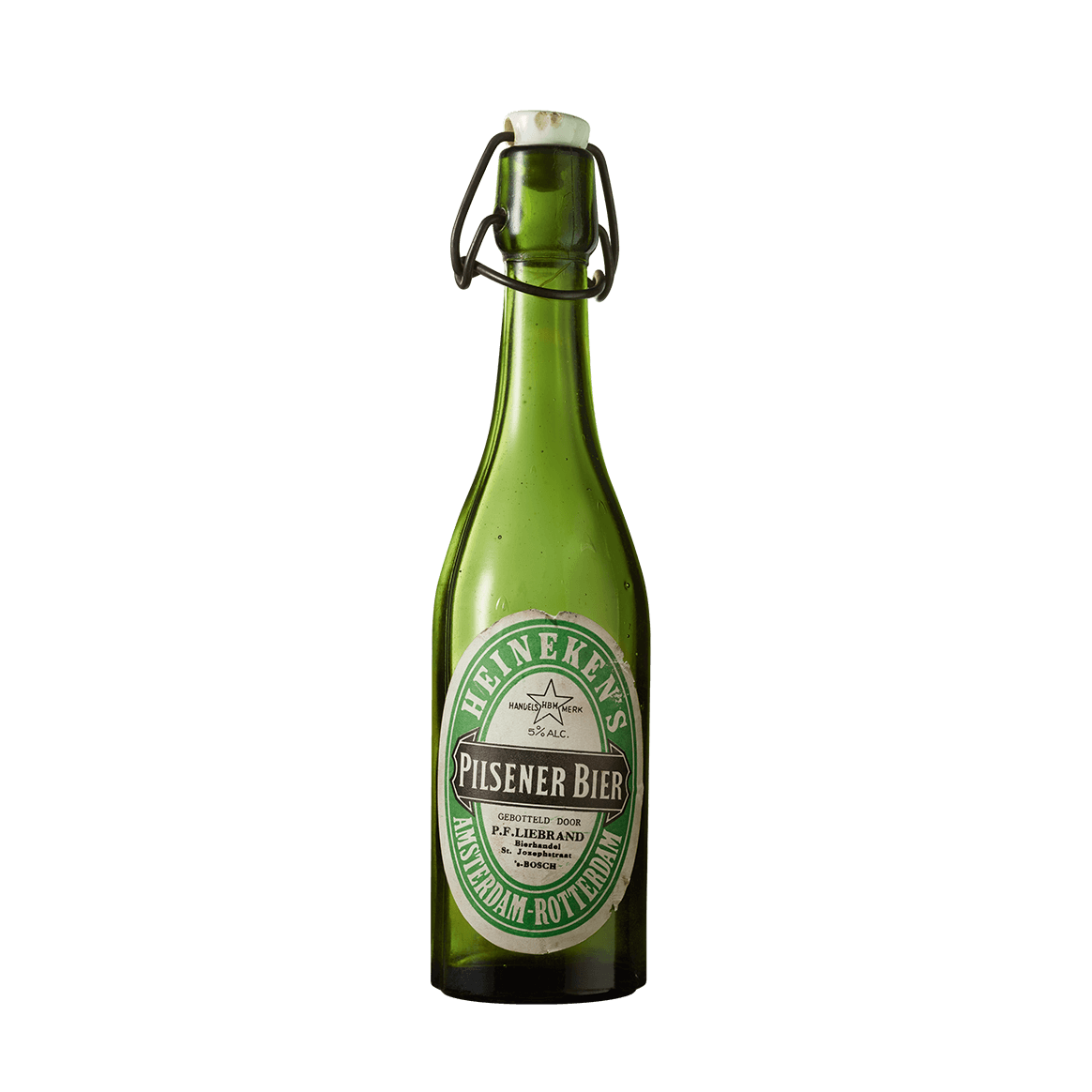
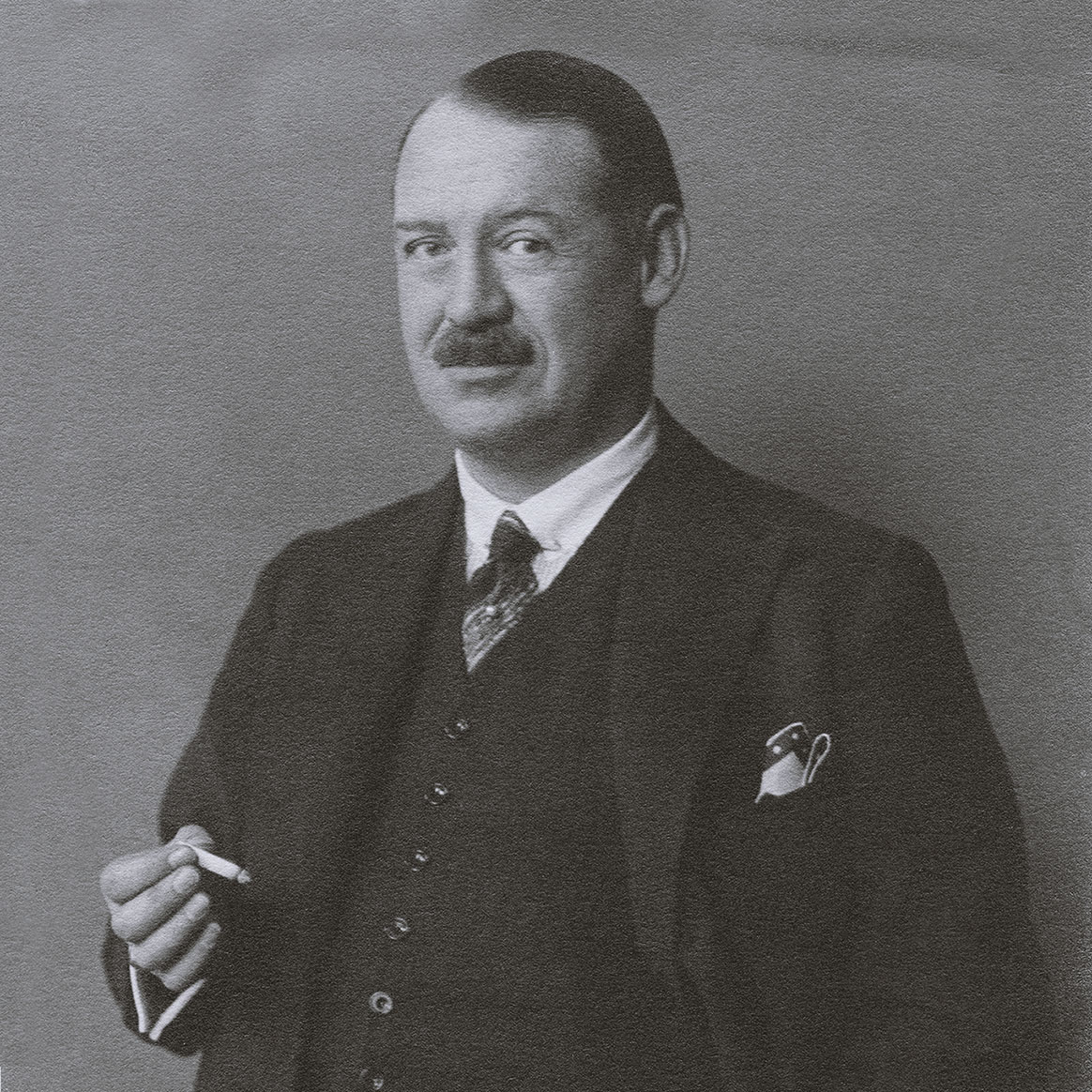
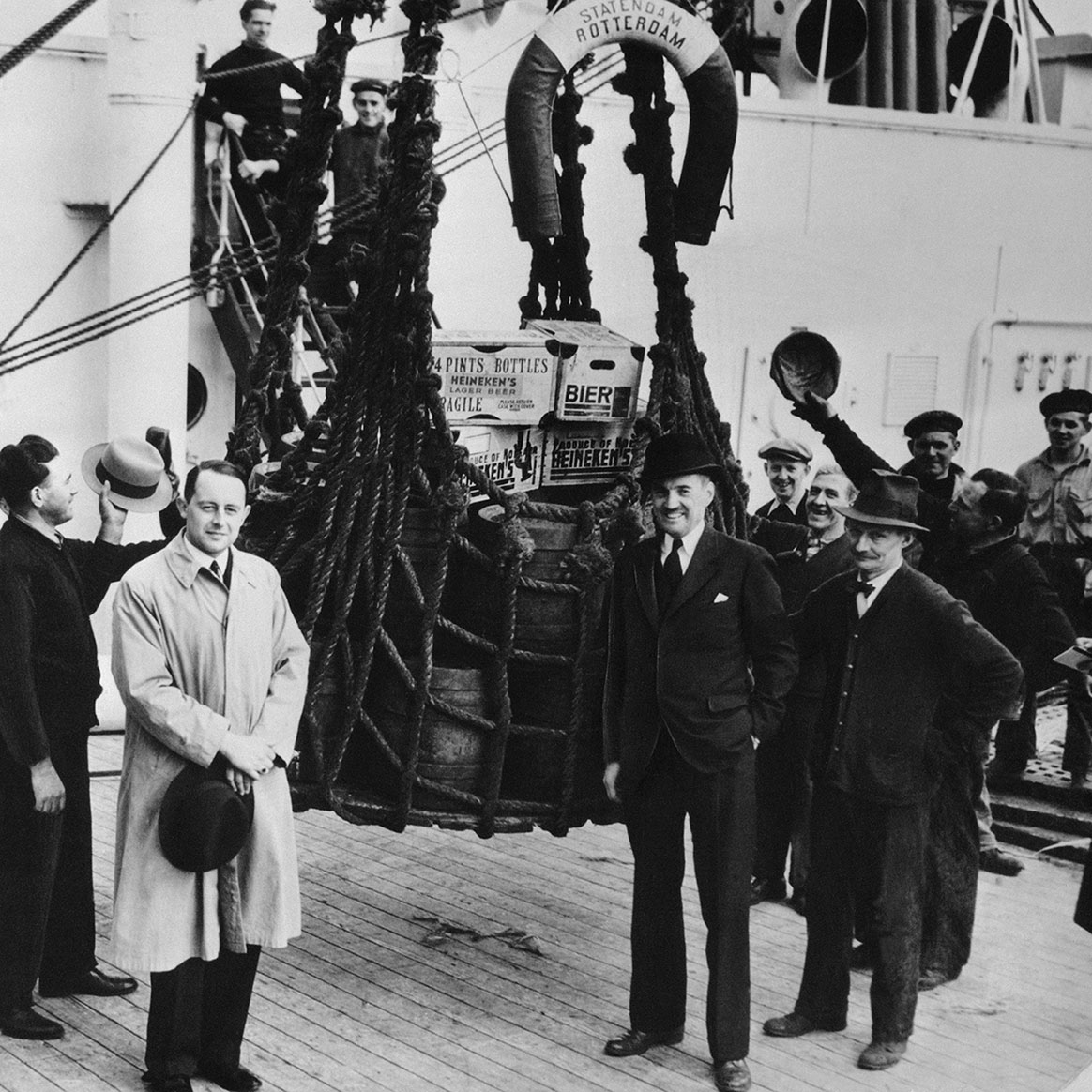

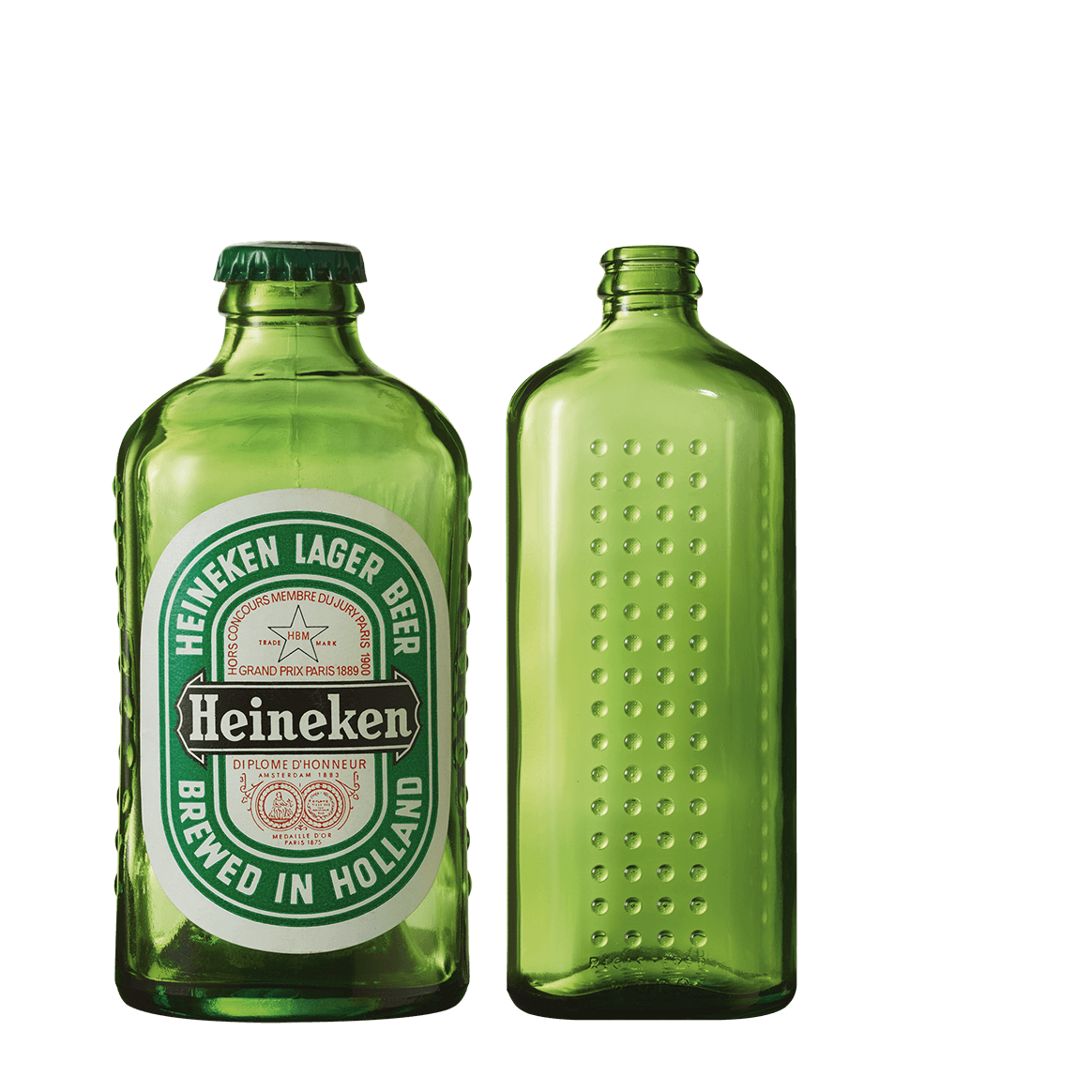
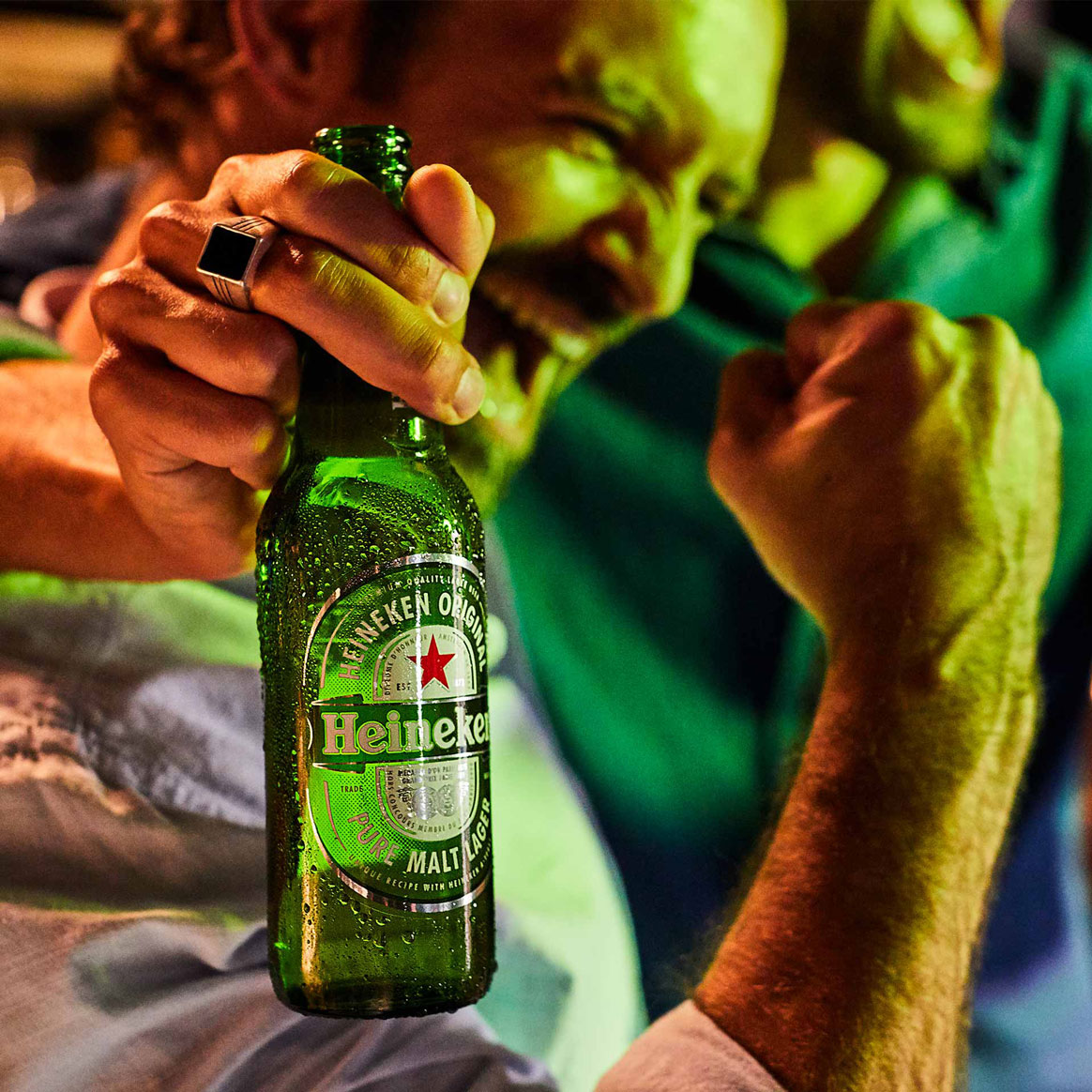
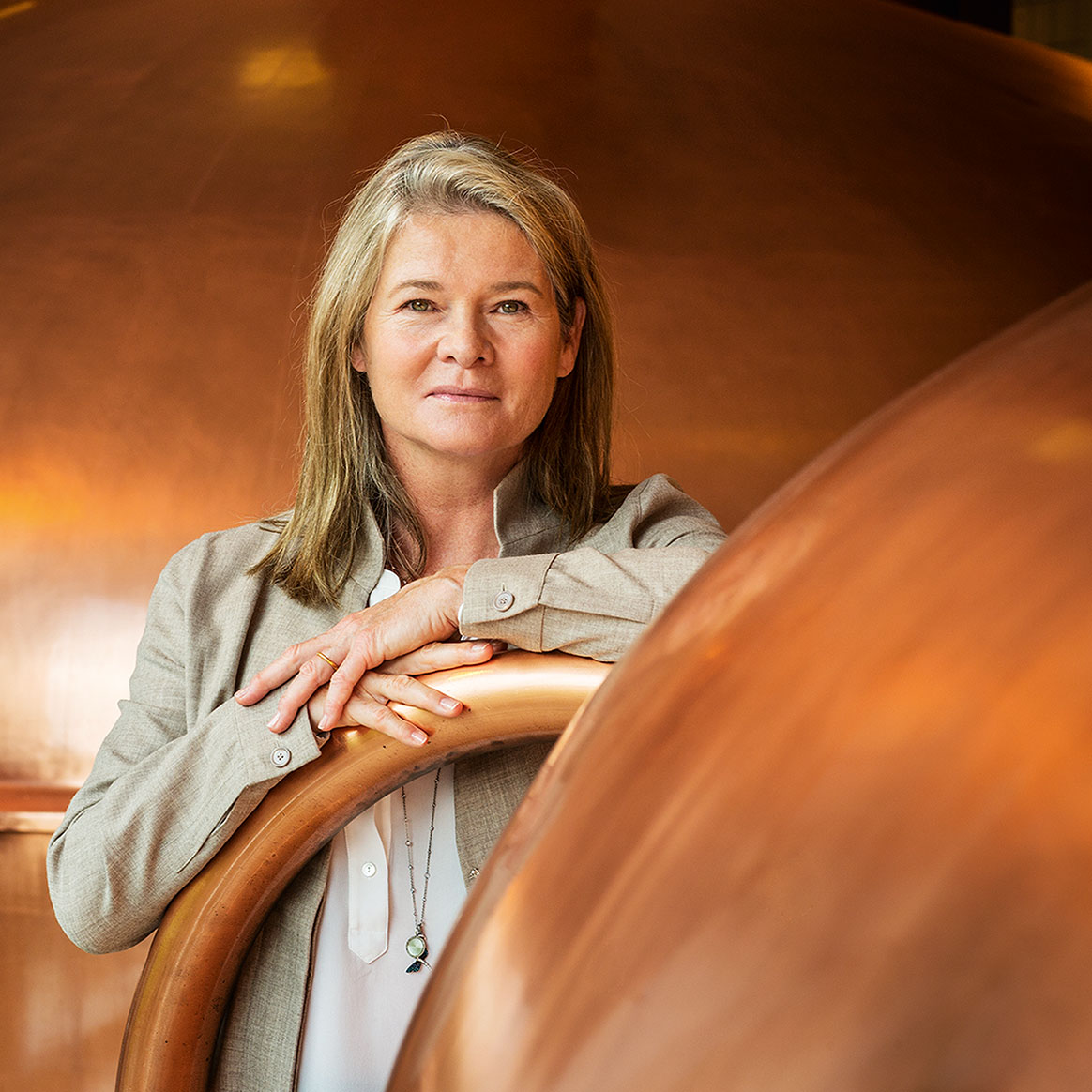
Gerard Adriaan Heineken is born into an Amsterdam merchant family in 1841. In 1864 he buys brewery ‘De Hooiberg’ (The Haystack) in Amsterdam and immediately turns his focus towards brewing uncompromised premium lager beer. He embraces the latest brewing innovations and becomes the first brewer on the planet to introduce a quality control lab. He also did a lot for the city of Amsterdam.
In 1873, Gerard Heineken started his small family brewery in the city center of Amsterdam. A city bustling with life and energy, even then. The brewery grew as fast as Amsterdam did and Gerard’s dedication to the quality turned it into an instant success. He did this without losing sight of what mattered most: remaining a family owned brewery who put the purity and excellence of the beer first. The rest, as they say, is history.
Brewing Heineken is its own reward, but it is always nice to be appreciated. When still a relative small brewery, Heineken won the Medal D’Or at the International Maritime Exhibition in 1875. Soon after that the Dutch beer company became the largest exporter to France. And in 1889 Heineken's new, pure-tasting pilsner won the prestigious Grand Prix at the Paris Expo. One year later Heineken started supplying the restaurant at the Eiffel Tower. Many rewards would follow, but these two milestones still adorn the brand's’ product labels.
Back in the 19th century, we discovered the unique A-Yeast®. Ever since it’s been the key to Heineken’s characteristic taste balance with subtle fruity notes that people all over the planet fell in love with. As you can imagine, we’ll always stay true to our A-Yeast®. There will never be a need for Plan B.
In the 19th century Paris was the place to be. So Gerard Heineken wanted to make the Parisians fall in love with his top quality beer. He won their hearts, and we keep the awards on our label as proof.
Henry Pierre Heineken is many things: a scientist, a senator, director of the Heineken Brewery Society and, from 1917, president of the Heineken brand. As second generation Heineken, Henry Pierre continues his father’s success and leads the company through the economic depression of the 1930s. He made bottling without losing quality possible and therefore made expansion abroad possible. He also sets the stage for future growth by increasing beer production without compromising on quality. During his presidency, he is renowned throughout the country for his socially progressive policies.
Imagine 1933 in the USA, 11 years of prohibition; hidden speakeasy bars, poker games, Al Capone… and no proper beer available. And then there was a rumour: prohibition might end soon. Heineken thought they’d love a truly premium quality beer after such tough times, and took the bet. A ship full of Heineken beer sailed to New York. Perfect timing; “prohibition is lifted!” Immediately celebrations started. With Heineken, the 1st import beer available.
Alfred Henry Heineken quickly makes a name for himself in the family company by personally establishing Heineken’s Advertising Department. "Had I not been a beer brewer I would have become an ad man",
he once said. The magic of the Heineken brand becomes his life’s work. He introduces the ‘smiling e’ and claims the colour green. He also introduces the Heineken logo-star, banner and hop vine - currently renowned around the globe. He is a marketing genius before the 'age of marketing' exists. His motto still very much exists today: ‘I don’t sell beer, I sell enjoyment’.
Innovation has played a major role in our 150-year heritage, and the original WOBO is a wonderful example of this imaginative thinking. Its ground-breaking design allows it to be re-used as a brick for building houses. This could’ve resulted in less litter and efficient up-cycling of materials. In fact, it’s one of the very first ‘brew a better future’ initiatives. But innovation is never easy, and technical hurdles after the first trial production in 1965, prevented the concept from being implemented.
Heineken has a rich history of engaging with the fanbase on numerous levels. We pride ourselves in the fact that although we have grown, we are still that small brewery striving for excellence and catering to our consumers in a personal fashion. So we are always looking for new and innovative ways to engage with our audience. That is why we are also involved in several sponsorships. This enables us to be present where our customers are and to be part of there lifestyles.
Charlene Lucille de Carvalho-Heineken is lawyer, architect and, since 1988, member of the Heineken Board of Directors. Since then she has revolutionised Heineken’s sustainable agenda by introducing ambitious green goals and initiatives. Today, Heineken’s green vision is integrated into every aspect of the company’s operations and processes. She is future-proofing the brand for the enjoyment of tomorrow’s consumers.

Gerard Adriaan Heineken is born into an Amsterdam merchant family in 1841. In 1864 he buys brewery ‘De Hooiberg’ (The Haystack) in Amsterdam and immediately turns his focus towards brewing uncompromised premium lager beer. He embraces the latest brewing innovations and becomes the first brewer on the planet to introduce a quality control lab. He also did a lot for the city of Amsterdam.

In 1873, Gerard Heineken started his small family brewery in the city center of Amsterdam. A city bustling with life and energy, even then. The brewery grew as fast as Amsterdam did and Gerard’s dedication to the quality turned it into an instant success. He did this without losing sight of what mattered most: remaining a family owned brewery who put the purity and excellence of the beer first. The rest, as they say, is history.

Brewing Heineken is its own reward, but it is always nice to be appreciated. When still a relative small brewery, Heineken won the Medal D’Or at the International Maritime Exhibition in 1875. Soon after that the Dutch beer company became the largest exporter to France. And in 1889 Heineken's new, pure-tasting pilsner won the prestigious Grand Prix at the Paris Expo. One year later Heineken started supplying the restaurant at the Eiffel Tower. Many rewards would follow, but these two milestones still adorn the brand's’ product labels.

Back in the 19th century, we discovered the unique A-Yeast®. Ever since it’s been the key to Heineken’s characteristic taste balance with subtle fruity notes that people all over the planet fell in love with. As you can imagine, we’ll always stay true to our A-Yeast®. There will never be a need for Plan B.

In the 19th century Paris was the place to be. So Gerard Heineken wanted to make the Parisians fall in love with his top quality beer. He won their hearts, and we keep the awards on our label as proof.

Henry Pierre Heineken is many things: a scientist, a senator, director of the Heineken Brewery Society and, from 1917, president of the Heineken brand. As second generation Heineken, Henry Pierre continues his father’s success and leads the company through the economic depression of the 1930s. He made bottling without losing quality possible and therefore made expansion abroad possible. He also sets the stage for future growth by increasing beer production without compromising on quality. During his presidency, he is renowned throughout the country for his socially progressive policies.

Imagine 1933 in the USA, 11 years of prohibition; hidden speakeasy bars, poker games, Al Capone… and no proper beer available. And then there was a rumour: prohibition might end soon. Heineken thought they’d love a truly premium quality beer after such tough times, and took the bet. A ship full of Heineken beer sailed to New York. Perfect timing; “prohibition is lifted!” Immediately celebrations started. With Heineken, the 1st import beer available.

Alfred Henry Heineken quickly makes a name for himself in the family company by personally establishing Heineken’s Advertising Department. "Had I not been a beer brewer I would have become an ad man",
he once said. The magic of the Heineken brand becomes his life’s work. He introduces the ‘smiling e’ and claims the colour green. He also introduces the Heineken logo-star, banner and hop vine - currently renowned around the globe. He is a marketing genius before the 'age of marketing' exists. His motto still very much exists today: ‘I don’t sell beer, I sell enjoyment’.

Innovation has played a major role in our 150-year heritage, and the original WOBO is a wonderful example of this imaginative thinking. Its ground-breaking design allows it to be re-used as a brick for building houses. This could’ve resulted in less litter and efficient up-cycling of materials. In fact, it’s one of the very first ‘brew a better future’ initiatives. But innovation is never easy, and technical hurdles after the first trial production in 1965, prevented the concept from being implemented.

Heineken has a rich history of engaging with the fanbase on numerous levels. We pride ourselves in the fact that although we have grown, we are still that small brewery striving for excellence and catering to our consumers in a personal fashion. So we are always looking for new and innovative ways to engage with our audience. That is why we are also involved in several sponsorships. This enables us to be present where our customers are and to be part of there lifestyles.

Charlene Lucille de Carvalho-Heineken is lawyer, architect and, since 1988, member of the Heineken Board of Directors. Since then she has revolutionised Heineken’s sustainable agenda by introducing ambitious green goals and initiatives. Today, Heineken’s green vision is integrated into every aspect of the company’s operations and processes. She is future-proofing the brand for the enjoyment of tomorrow’s consumers.